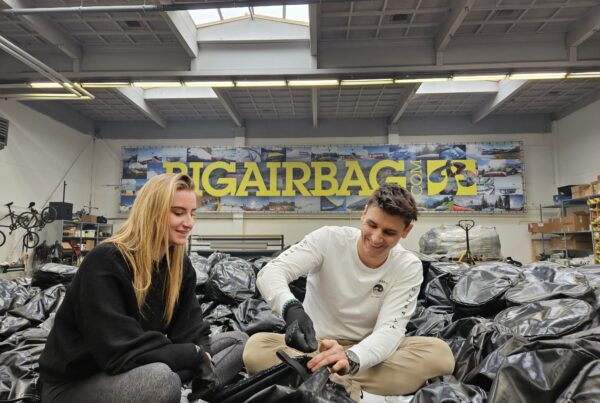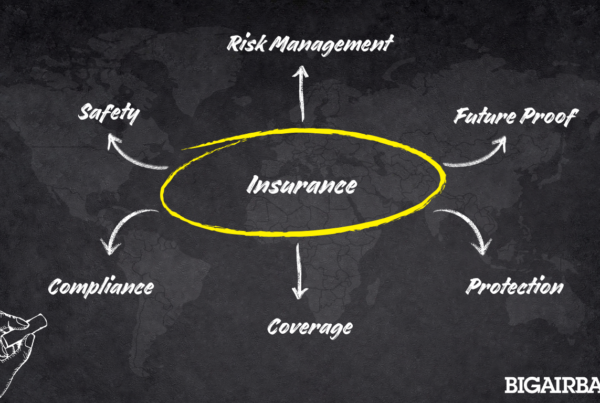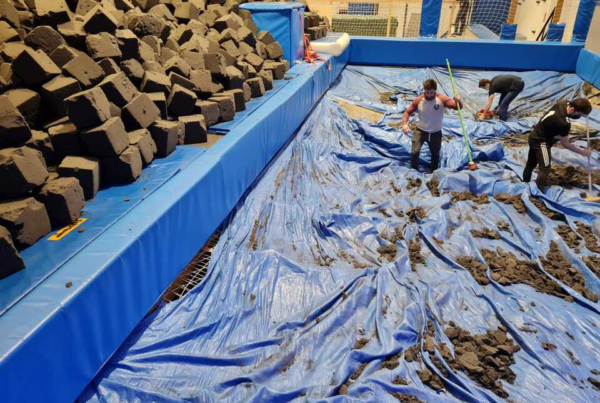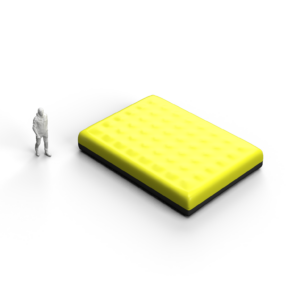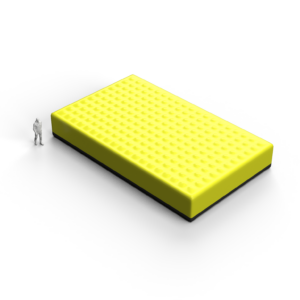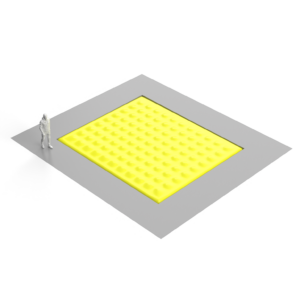In recent months, trampoline parks across France have faced new regulations that effectively mark the end of foam pits as a viable option. These changes come in response to increasing concerns about both fire safety and the overall security of users. The foam traditionally used in these pits, typically made from polyether, fails to meet the stringent fire and safety standards required by law. Recent regulatory changes in France, particularly regarding fire safety standards like EN 13501 (which classifies building materials based on their reaction to fire) and public safety requirements like EN 1176-10 (which governs the safety of trampoline equipment), have made the use of foam pits increasingly difficult to justify.
Growing Awareness of Foam Pit Risk
Beyond fire safety, there’s a growing awareness that foam pits may not be as safe as once thought. Several serious accidents, including a fatal incident in the North of France in 2018, have brought these risks to the forefront. It appears that the Civil Security Directorate used this opportunity to push for stricter regulations, leading to the refusal of foam pits in new trampoline parks. In light of these events, French authorities have begun to impose regulations that effectively make foam pits a thing of the past.
The Reality of Foam Pit Safety
While foam pits are designed to offer a soft landing, the reality is that they can give jumpers a false sense of security. This overconfidence often leads to attempts at complex manoeuvres that increase the risk of injury, particularly to the neck and spine. However, there are other critical issues with foam pits that exacerbate the danger:
- Compression Over Time: As foam blocks compress over time, the pit becomes less effective at cushioning impacts, essentially turning into a hard surface. This significantly increases the risk of injury, especially in pits that are not regularly maintained or replenished.
- Inconsistent Cushioning: Foam pits often suffer from inconsistent cushioning across the pit. This means that while one area may provide adequate support, another could be dangerously compacted, leading to unpredictable and potentially harmful landings.
- Hygiene Concerns: Foam pits are notoriously difficult to clean. The foam blocks can trap dirt, sweat, and other debris, leading to unsanitary conditions. This can pose health risks, particularly in high-traffic areas where multiple users come into contact with the same surfaces.
- Hidden Hazards: Personal items like mobile phones, glasses, and even jewelry often get lost in foam pits. These items can become hidden hazards that contribute to injuries when jumpers unknowingly land on them.
Why Airbags Are the Future
As foam pits fall out of favor, trampoline parks are increasingly turning to airbags as a safer, more reliable alternative. Airbags offer numerous advantages:
- Fire Safety: Made from fire-resistant vinyl, airbags meet all necessary safety standards, including those under EN 13501.
- Durability and Maintenance: Unlike foam, airbags don’t break down over time, are easy to clean, and require less maintenance, making them a cost-effective solution in the long run.
- Enhanced User Safety: Airbags provide consistent cushioning, quickly return to their original shape, and can safely accommodate multiple jumpers at once.
- Hygiene: Airbags are much easier to clean and maintain than foam pits, which can trap dirt, sweat, and debris. This ensures a more hygienic environment, especially in high-traffic parks, reducing health risks for users.
At BigAirBag, we’re leading the charge in this transition, offering top-of-the-line airbags that not only enhance safety but also reduce maintenance costs and improve the overall user experience.
Looking Ahead: The Global Impact
The shift away from foam pits in France could be a sign of what’s to come globally. As more parks recognize the inherent dangers and opt for safer alternatives, it’s likely that international regulations will soon follow suit. The professionalization of the trampoline park industry, with better training, improved equipment, and stricter safety standards, is paving the way for a safer future.
At BigAirBag, we believe that the adoption of airbags is not just a response to regulatory changes but a proactive move towards ensuring the highest level of safety for all users. As the industry evolves, we are proud to be at the forefront, providing solutions that set the standard for trampoline parks worldwide. Book a call to discuss with one of our experts.

Trampoline Parks Embracing Airbags for Safer, More Enjoyable Experiences
